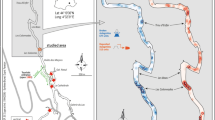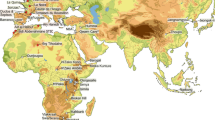Abstract
In this research, typology of bronze ornaments discovered from Jafar-Abad and Tu Ali-Sofla kurgans (second phase of excavations) near Aras River in Khoda-Afarin town was investigated. These kurgans belong to combatant and migrating Eurasian tribes, which migrated to northwest Iran in Iron Age II (1200–800 B.C.). From the total number of 103 discovered objects, 93 objects were bronze ornaments, including rings, bracelet, earring, buttons for clothes, and spiral. Discovery of ornaments of various types’ revealed the existence of a social classification system of people in these tribes. In addition, study on the discovered buttons from these kurgans showed that as a tradition in burial ceremonies, the deceased were buried wearing clothes. To understand the basics of metalworking of combatant and migrating Eurasian tribes, analytical investigations were also conducted on three jewelry items including a bracelet, a ring, and an earring from a total number of 93 bronze ornaments discovered.




























Similar content being viewed by others
References
Avsarova I (2007) Xocali-Gədəbəy Mədəniyyəti Tayfalarinin bədii Tunc Məmulati. nurlan, Baki
Cleuziou S (1982) Early tin the Near East. Expedition 24:14–19
Fleming SJ, Pigott VC, Swann CP, Nash SK (2005) Bronze in Luristan: preliminary analytical evidence from copper/bronze artifacts excavated by the Belgian mission in Iran. J Iran Antiq XL:35–64
Ghireshman R (1938) Fouilles de Sialk. Librairie Orientaliste Guenthner, Paris
Giumlia M, Keall EJ, Shugar AN, Stock S (2002) Investigation of a copper-based hoard from the megalithic stile of al-Midamman. Yemen: an interdisciplinary approach. J Archaeol Sci 29:195–209
Iravani Gadim F (2012) Jafar Abad Kurgan No V. Studies Presented In Honor of Sümer Atasöy: Edited By Şevket Dönmez 95–120
Iravani Ghadim F (2011) JafarAbad VIII. Kurgan Kazilari, Kuzeybati, Iran. Karadeniz’den Firat’a Bilgi Uretimi, Onder Bilgi’ye Armagan Yazilari. Ankara 191–216
Iravani Ghadim F (2014) JafarAbad Kurgan No IV. Script a: Essays in Honor of Veli Sevin. Edited by Aynur Ozfirat. Istanbul 87–106
Konrad P (2008) Untersuchungen zur Relativen Chronologie der Nekropole von Marlik. Dissertation an der Fakultät für Kulturwissenschaftender Ludwing–Maximilians-Universität München
Moorey PRS (1974) Ancient Persian bronze in the Adam collection. Ashmolean Museum, Oxford
Muscarella WO (2005) The iron Dinkha Tepe. Metrop Mus J 9:35–90
Muscarella WO (2008) Excavations at Agrab Tepe, Iran. Metrop Mus J 8:47–76
Museyibli N et al (2008) Report on excavation of Tovuzchai Necropolis. Azerbaijan National Academy of Sciences Institute of Archaeology & Ethnography
Nagel W, Strommenger E (1985) Kalakent, Früheisenzeitliche Grabfunde aus dfm Transkaukasischen Gebiet Von Kirovabad, Jelisavetopol. Wissenschaftsverlag Volker Spies GmbH, Berlin
Scott DA (1991) Metallography and microstructure of ancient and historic metals. The Getty Conservation Institute, The J. Paul Getty Museum in Association with Archetype Books
Stronach D, Roaf M (1978) Excavations at Tepe Nush-i Jan, part I. Iran XVI:1–29
Talai H, Aliyari A (2009) Haftvan IV (iron II) settlement cemetery, NW-Iran, Azarbaijan. Iranica Antique XLIV:89–112
Vanden Berghe L (1964) La Nécropole de Khurvin. Publication de Institut Historique et Archéologique Neerlandais de Stambul ne XVII, Istanbul
Vander Voort GF ,Warmuth FJ,Purdy SM, and Szirmae (1993) Metallography past, present and future. ASTM, Philadelphia
Yablonsky LT (2000) Scythian triad and Scythian world, Kurgans, ritual sites and settlement Eurasian Bronze and Iron Age. Jeanine Davis Kimball, Part 1:1–5
Author information
Authors and Affiliations
Corresponding author
Rights and permissions
About this article
Cite this article
Kiani, L., Ghadim, F.I. & Ahmadi, H. Study on the discovered ornaments from Jafar-Abad and Tu Ali-Sofla kurgans (second phase of excavations). Archaeol Anthropol Sci 10, 973–987 (2018). https://doi.org/10.1007/s12520-016-0389-x
Received:
Accepted:
Published:
Issue Date:
DOI: https://doi.org/10.1007/s12520-016-0389-x




